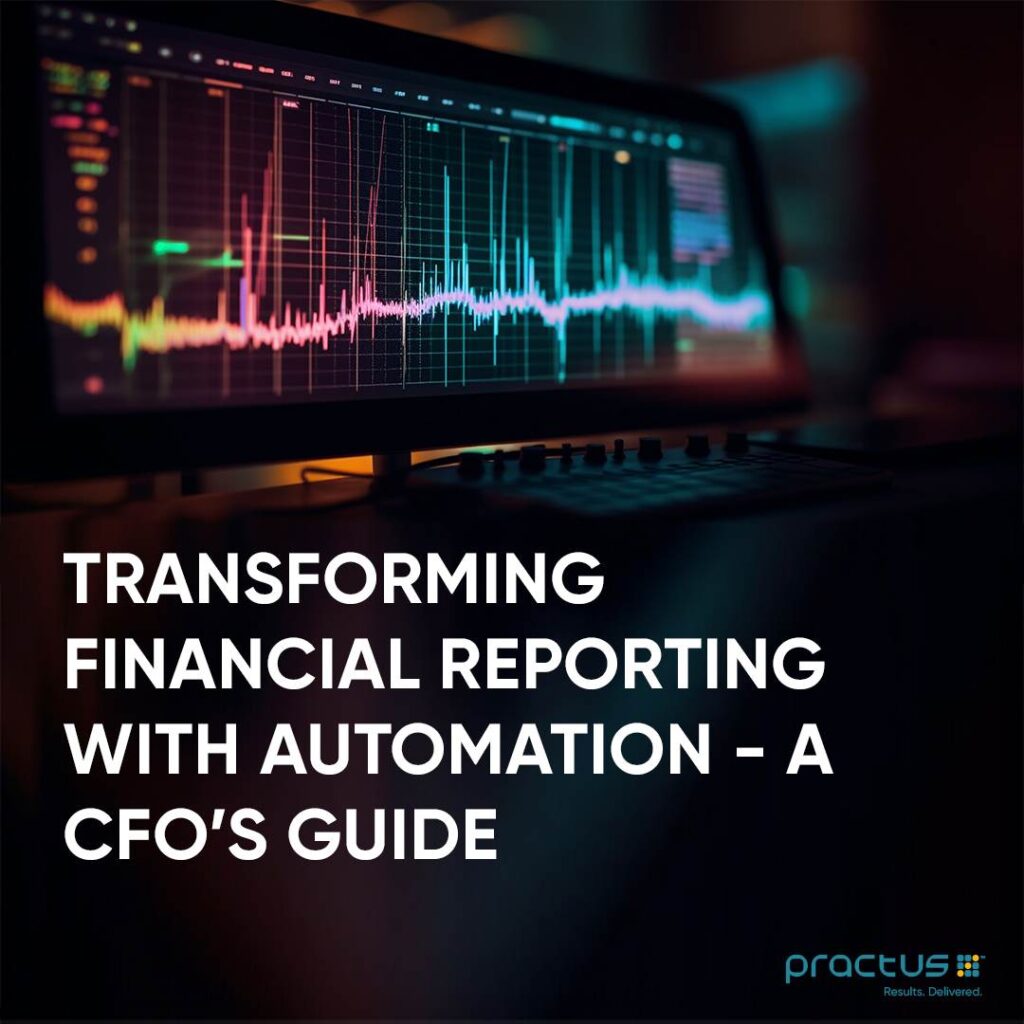A recent headline caught our attention. It quoted a research report to suggest that finance teams were alarmingly less efficient now than they were a year ago. The data was based on research conducted by InsightsSoftware and the report was published on Business Wire. It went on to suggest that sparse resources following job cuts over recessionary fears began a trend that got accentuated by a reduced focus on automation and a limited hiring market.
In this scenario, how would enterprises manage timely and accurate closing of books, which is the top priority for every CFO. In doing so, they also need to be abreast of changing accounting practices and regulatory compliance. It could take weeks for the F&A (finance and accounting) teams to complete the tasks. What’s more, all of this extra work means that the CFO has lesser bandwidth to tackle newer focus areas such as:
- Partnering with the CEO for cross-functional duties
- Data analysis and initiatives for profit improvement
- Identifying, quantifying, and mitigating risk, and
- Communicating with and supporting business lines
However, there seems to be some trouble brewing for CFOs. Tighter budgets are slowing down hiring from a limited finance talent pool and automation is going down the priority scale. The survey noted that 25% of the respondents were still digitally transforming their accounting process as against 40% in 2022. A mismatch between their requirements and IT fulfillment capabilities was one of the challenges.
Where can CFOs truly make tech count?
Given the budgetary challenges and the lack of a quality workforce, CFOs need to leverage new platforms to enhance productivity and generate data for actionable insights. This makes automation of financial reports and analytics mission critical. Financial reports prepared by robotic process automation (RPA) are documented, consistent, and easily auditable. The key benefits of deploying this technology include:
- Quick approvals – From expense reimbursement to budget approvals, files for different processes around finance require stakeholder approvals across levels. Without report automation, these approvals get delayed, especially when such documents go via emails causes poor version controls.
- Enhanced efficiency – Removing manual processes enhances efficiencies and cuts down errors. The slow data searches, the time-consuming and error-prone data entries and the complex analysis on spreadsheets can easily be removed.
- Data integrity – Automation of financial data ensures data integrity by removing manual errors. Manual data entries result in errors that become tough to pinpoint and remedy at a later time. Organizations can have better data quality that results in more accurate financial statements.
- Transparency – Connected data systems provided by automation brings transparency to the processes and real-time availability of data. The CFO can pull out information at the click of a button to observe patterns around each financial parameter and use it to drive actionable insights.
- Reduced risk of fraud – Given that automation makes manual entries scarce, the CFO reduces the risk of data fraud. There are AI-based tools that can send a nudge to the user when it spots fishy reporting.
- Audit trails – Finally, since automation maintains an audit trail by tracking and storing data within the system, it makes things easy for a CFO or the Board to refer back to specific payments at any time, thus addressing discrepancies at any point in the compliance process.
Best practices for financial reporting automation
A recent publication from McKinsey notes that while most companies started digital and AI transformation, very few have done so after doing a fundamental rewiring of their organization towards building the capabilities to drive continuous innovation. The book titled “Rewired” found that long-term success comes when the C-suite fundamentally changes their talent, operating model, technology, and data capabilities. Therefore, while deploying automation, it may be worth considering some best practices:
- Draft a clear strategy focused on business value. The CFO needs to take a lead to focus on digital transformation efforts across functions with a clear buy-in from all stakeholders, from the C-suite to the finance professional.
- Identify the right talent pool that provides a judicious mix of engineers, designers and finance professionals. Digital talent needs to work alongside business colleagues for the best solution to emerge – one that satisfies all and is future-proofed too.
- A scalable model is also crucial for sustaining such transformation. Once again the CFO must lead the effort of creating systems that work seamlessly across divisions and help collect data that gets used by everyone.
- A distributed model for both ideation and delivery of digital assets is also essential for the automation process to succeed. Encouraging smaller tech teams working with business managers is a sure way of getting division level buy-ins for speedy implementation and future updates.
- Adoption and change management is what eventually makes tech updation cycles successful. The existing linear process of gathering requirements, developing solutions, testing and training the end user needs to be eschewed. For every dollar that a CFO spends on developing a digital solution, another dollar must be added for implementing process changes, user training and change management efforts.
In Conclusion…
There is no alternative to digital transformation and the finance function often has the most to gain from this process. CFOs seeking to become game-changers need to push the envelope even during tough budgetary conditions. In fact, going ahead now would prove the point that more than money, it is the desire to innovate that needs to be inculcated within teams as quality of customer service is fast becoming the key to outcompeting.

